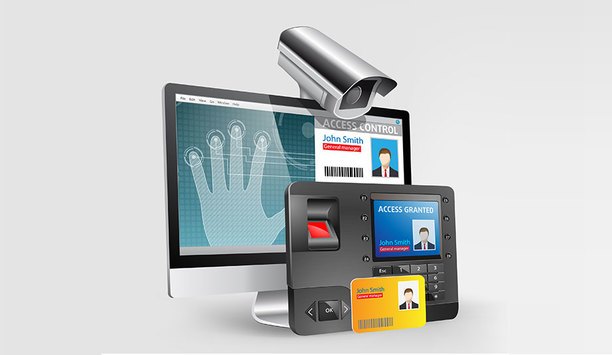 |
| IP is here and is continuing to proliferate in the security industry and its next major advancement is in pure IP access control |
IP technologies in the security industry are nearly ubiquitous today. End users and integrators have adopted and embraced IP cameras, building automation systems, wireless mesh networks, alarms, monitoring, and regularly view all of these technologies from the palm of their hand, on their smart phone. The technologies are easier to install, often cost less, scale across large geographies and networks, utilize less proprietary hardware, have open platforms with solid API’s and SDK’s, and empower the end user to have more information instantly than ever before. IP is here and is continuing to proliferate in the security industry and its next major advancement is in pure IP access control.
Access control has been slow to adopt the technology of its close relative video surveillance. The legacy products of panel based access control platforms have resisted the market demand of the security end user for pure IP and have instead entrenched themselves in proprietary technologies and “IP enabled” products . Their infrastructure of panels, batteries, readers, complex and expensive wiring, server hardware and software licenses, all can be replaced with a simple reader/controller and standard category cabling. It seems like we have seen this infrastructure before in the industry with former video surveillance hardware giants falling from superior market positions because they held on to their historical technologies. The lesson has been learned and end users are keen to move more rapidly into a pure IP access control technology. The next step is to overcome the F.U.D. factors (fear, uncertainty, and doubt) that are spread by legacy manufacturers who have a strong financial interest in keeping things status quo. So let me help the market and put any misconceptions to rest by addressing the 10 top concerns and how pure IP access control addresses each respective area.
1. Security Of The Product
Legacy based panel technologies often justify their systems by the F.U.D of the security of the system. They justify the panels being placed in secure closets, with centralized decision making from a proprietary server as being a “better” methodology than IP can deliver. If we could rewind history and read the publications of 10 years ago in the video surveillance world, we would find the same arguments, justifications, and logic. However, customers sorted their ways through the technical documentations and chose IP devices that provided greater functionality at the edge and center of their system. Those same technologies and more are needed in access control.
These different levels of security such as 256 bit AES encryption, significant network security, strong password credentialing, and data transmission encryption technologies allow for a greater amount of true security than can be provided from a legacy based system. In fact, many of the legacy based systems while physically separated from physical meddling are far more susceptible to network and denial of service attacks when “IP enabled” than products originally created with these in mind as a pure IP product.
It seems like we have seen this |
2. Security Of The Network
IP access control utilizes the same network security protocols that are used for hardwire network and wireless network connections. IP cameras, wireless networks, and even open Ethernet wall ports are on the interior and exterior of facilities. That has forced the IT staff to address these potential threats. Today, even the smallest networks are not enabling DHCP for any device to connect and have access to the network. Production networks are physically and logically separated from “guest” networks. In addition, port security on the switch networks are enabled, preventing devices from connecting in inducing excessive amounts of traffic. Finally, port based MAC address management has prevented unauthorized access to the networks.
3. Power Of Locking Hardware And Accessories
Today’s pure IP access control products utilize the highly efficient and easy to deploy power technology of power over Ethernet (PoE). In using IEEE 802.3af PoE, there was a concern that there would not be enough power to supply the locking hardware, request to exit, PIR, and magnetic locks. This has been addressed by multiple vendors of IP access control in providing a power budget of up to 600ma. This addresses nearly all door hardware and allows for a less expensive power option over power supplies, batteries, and expensive cabling.
4. Utilisation Of Existing Infrastructures
Ethernet category cabling, commonly known as Cat5, 5e, 6, and 6A, was deployed at a feverish pace throughout the 1990’s and up to today. IT personnel clearly understand the design, implementation and maintenance of this infrastructure and continue to deploy technologies that allow for its vendor-agnostic utilisation. Pure IP access control systems make use of this utility and minimize the use of expensive application specific wiring.
5. Time Of Installation
Not having to place panels, batteries, power supplies, and install multiple specialized wires, simply cannot compare to the simplicity of installing a single category cable. The time to install is simply much easier for the integrator and the connections to the door hardware can be made with a simple pre-manufactured whip.
6. Decision Making Of IP Devices
With IP access control, there is the ability to have the reader/controllers make local decisions and store credential information and events as well as operate centrally from a server network. This allows for network flexibility and provides a great failsafe in the event of network outage.
The ability to program the system |
7. Geographical Distribution
Perhaps one of the greatest benefits of IP based systems is the ability to manage and administer devices across the globe. The ability to program the system centrally and to manage many different remote sites is an intrinsic benefit of a system that relies solely on the network. This singular benefit is why many customers chose to move to IP video systems, and why schools, hospitals, governments, and multinational corporations are investing in IP access control.
8. Enterprise Class Software
The IP surveillance market was transformed in large part due to software vendors allowing the use of multiple hardware platforms. These platforms offered customers different features and scalability benefits. The access control industry has several vendors that are following the same business model with great success. With IP access control, customers have the ability to choose best in class hardware and the software platform that best meets their needs.
9. Ease of Use
Legacy access control systems are notoriously difficult to operate for end users. Integrators typically are required to attend a 3-5 day onsite training and pay thousands of dollars for their certification processes. As a result, the experience for the end users can be complex and always require involvement from a certified integrator.
10. Freedom From Being Tied To Licenses
The pain of maintaining server licenses, seat licenses, and upgrade licenses is confusing and painful for many end users. In a pure IP access control system, customers have the ability to select systems that best meet their needs and have the best cost and feature matrix for their facilities.
Pure IP access control is not a technology of the future. It is a technology of today and here to stay for the long term. The speed of adoption will be faster than the ten years it took for IP cameras, but how fast is hard to predict. Integrators are embracing IP access control to complement their IP camera options; thereby creating full solutions with low voltage architecture and providing their customers scalable options for the future. It is an exciting time in this marketplace as we watch another technological advancement take the user experience to the next level.



























